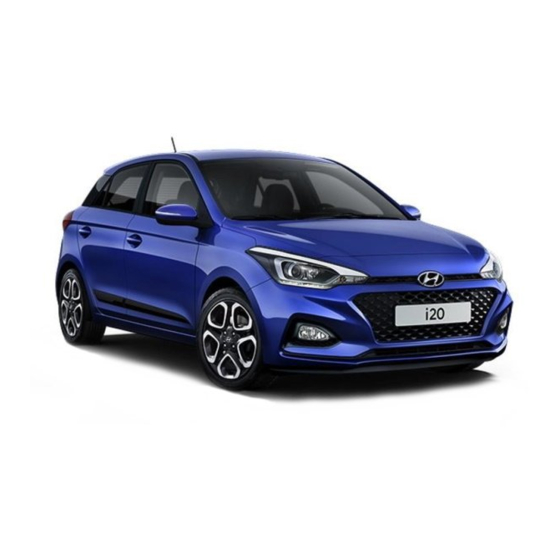
Hyundai i20 Owner's Manual
Hide thumbs
Also See for i20:
- Owner's manual (632 pages) ,
- Owner's manual (208 pages) ,
- Owner's manual (400 pages)
Table of Contents
Advertisement
Quick Links
OWNER' S MANUAL
Operation
Maintenance
Specifications
All information in this Owner's Manual is current at the time
of publication. However, HYUNDAI reserves the right to make
changes at any time so that our policy of continual product
improvement may be carried out.
This manual applies to all models of this vehicle and includes
descriptions and explanations of optional as well as standard
equipment.
As a result, you may find material in this manual that does not
apply to your specific vehicle.
Advertisement
Chapters
Table of Contents















Need help?
Do you have a question about the i20 and is the answer not in the manual?
Questions and answers
How to use the Cruise control in my Hyundai i20 Sportz IVT automatic Petrol car?
To use cruise control in a Hyundai i20 Sportz IVT automatic petrol car:
1. Press the cruise control button on the steering wheel to activate the system.
2. Accelerate to your desired speed.
3. Release the accelerator pedal.
4. Set the speed using the cruise control switch:
- Push the switch upwards to increase speed.
- Push it downwards to decrease speed.
5. To deactivate cruise control, press the cruise control button again.
This answer is automatically generated
I **** using the mechanical key as the key fob has been lost. My question is: How can l lock all the doors when l leave the vehicle as at the present time l have to reach to each door and manually push the lock button on each door? Should l not be able to shut the drivers door and then put the key into the door lock and turn the key counter clockwise or is there another way besides reaching to each door and pushing the lock button on each door.
To lock all the doors of a Hyundai i20 using the mechanical key, turn the key toward the front of the vehicle. If the car is equipped with the central door lock system, locking the driver’s door with the key will lock all vehicle doors automatically.
This answer is automatically generated
Does my Hyundai i20 Sportz IVT petrol car have Adaptive Cruise Control (ACC)? While cruise driving, how do I mechanically maintain a safe distance from the car in the front?